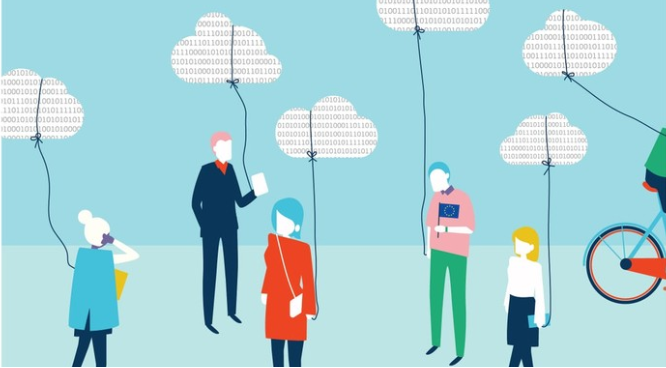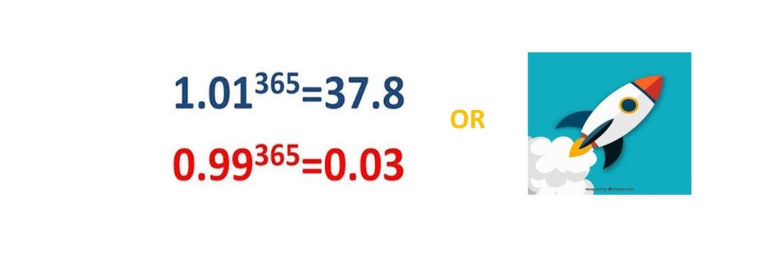Kristallnacht, or simply Pogromnacht, occurred 80 years ago on November 9-10, 1938. The Pogrom was…
Game On! How to Design Gamified Experiences that Drive Employee Results
Gabe Zichermann, a gamification expert, says, “People may be motivated by getting a gift card, but what really drives them is recognition as well as status.”
Gamification is a well-established concept that dates back over a century. Its origins can be traced to the use of game-like elements in education, military training, and other fields. Today, gamification is widely used in various industries to engage users, drive behavior change, and improve user experience. With advancements in technology, the gamification landscape has evolved to include sophisticated game mechanics, data analytics, and artificial intelligence, providing organizations with powerful tools to achieve their goals.
The term “gamification” emerged in the digital media industry in the early 2000s, but became more widely recognized after 2010. According to Mordor Intelligence, the Gamification Market is projected to grow significantly in the next few years. The estimated value of the market is USD 15.43 billion in 2024, and it is expected to reach USD 48.72 billion by 2029. This represents a compound annual growth rate (CAGR) of 25.85% during the forecast period from 2024 to 2029.
Several factors are driving the growth and application of gamification in business settings. First, the influx of millennial has brought with it a preference for interactive, game-like experiences. Additionally, advancements in technology have enabled more sophisticated gamification techniques through digital platforms. Most importantly, organizations are seeing tangible results from gamification initiatives – increased productivity, better training outcomes, higher employee engagement, and more.
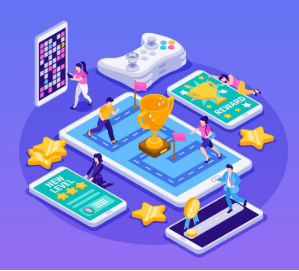
It aims to leverage people’s natural desires for competition, achievement, status, self-expression, altruism, and closure. In the workplace, gamification strives to make typically mundane tasks more enjoyable and intrinsically motivating.
Gamification offers immense potential to increase employee engagement by introducing fun and interactivity into routine work processes. The so-called “serious play” of gamification taps into critical drives like mastery, purpose, autonomy, progress, and social connection.
By applying game principles and psychology in a sophisticated manner, the goal is to enhance workplace productivity and foster loyalty. As more companies adopt gamification for core business objectives, its ability to function as a powerful employee engagement tool continues to be explored.
What is Gamification?
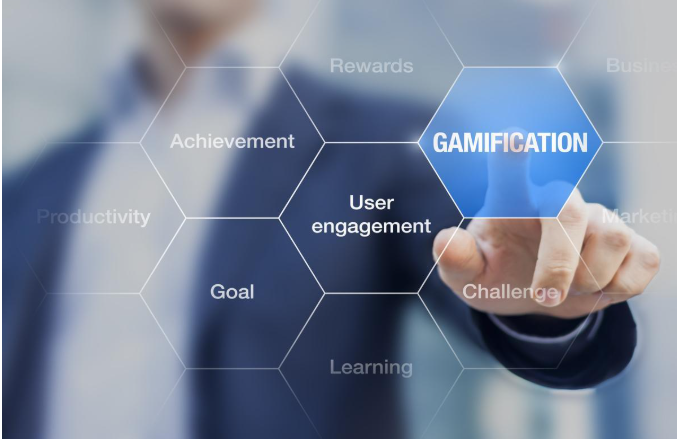
Gamification, in the corporate sphere, is the strategic incorporation of game design elements in non-game contexts to boost employee engagement, productivity, and overall job satisfaction.
This concept is not about turning work into a game but rather about enriching work processes with game-like mechanics to motivate and engage employees.
Some fundamental gamification techniques include
- Points – A standard virtual currency awarded for completing tasks or achieving goals. Points provide essential feedback and recognition.
- Badges – Visual representations of achievements that recognize exceptional accomplishments. Badges satisfy users’ desires to show status.
- Leaderboards – Public displays of ranked user performance. Leaderboards create competition and motivation to climb the ranks.
- Levels – Progressive stages requiring more experience points and achievements to advance. Higher levels satisfy users’ needs for progress and mastery.
- Challenges – Time-sensitive tasks and quests that provide short-term goals and incentives. Challenges increase engagement through fun problem-solving.
- Rewards – Virtual or real prizes and perks granted for significant achievements. Rewards recognize special efforts and satisfy users’ needs for recognition.
Psychological Benefits for Employee Engagement
The effectiveness of gamification in employee engagement lies in its ability to cater to fundamental human psychological needs. By understanding these psychological underpinnings, organizations can harness gamification to create a more motivated and committed workforce.
Intrinsic and Extrinsic Motivators
The power of gamification is twofold, targeting both intrinsic and extrinsic motivators. Intrinsic motivators are internal desires to perform a task for its own sake, such as the pursuit of knowledge or personal growth.
Gamification addresses these by offering opportunities for skill development, creative expression, and autonomy. For instance, employees might be encouraged to undertake challenging tasks, offering a sense of accomplishment and personal mastery.
On the other hand, extrinsic motivators are external rewards, such as bonuses, points, or public recognition. Gamification leverages these through leaderboards, badges, or point systems, which provide tangible acknowledgment of an individual’s effort and achievements.
This recognition not only satisfies the need for external validation but also fosters a healthy competitive spirit within the workplace.
Behavioral Psychology in Gamification
The principles of behavioral psychology are deeply ingrained in gamification strategies. Concepts like the ‘endowment effect,’ where individuals value a reward more highly if they have put effort into earning it, play a crucial role.
Similarly, the ‘feedback loop’ in gamification provides immediate feedback on performance, encouraging continuous improvement and engagement.
Gamification also taps into the social aspect of psychology. Social interactions and collaborations facilitated through team-based challenges or shared goals, fulfill the human need for social belonging and can significantly boost morale and team cohesion.
In essence, gamification, when strategically implemented, creates a work environment where employees feel both internally motivated and externally rewarded, leading to higher engagement levels and job satisfaction.
How Gamification Can Engage Employees
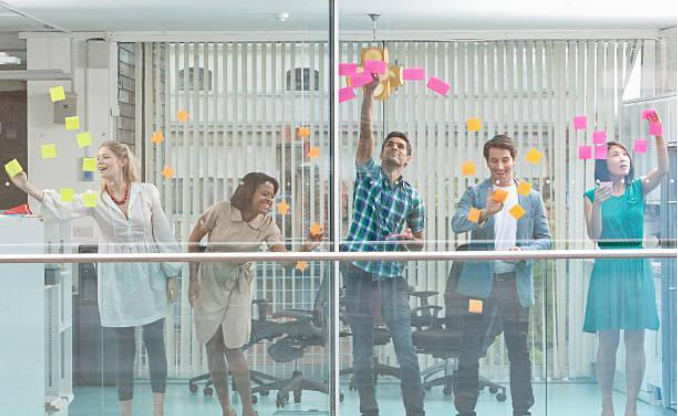
Implementing gamification in the workplace is more than just adding points or leaderboards to tasks. It requires a thoughtful approach that aligns with the company’s culture and objectives. Here, we outline essential strategies to utilize gamification for employee engagement effectively.
Tailoring to Company Culture
The first step in employing gamification is to tailor it to fit the unique culture and values of the organization. What works for a tech startup might not suit a traditional law firm.
Understanding the employee demographic, organizational values, and work environment is crucial for designing a gamification strategy that resonates with the workforce.
Setting Clear Objectives:
Gamification must be purpose-driven, with clear objectives. Whether the goal is to boost sales, improve learning outcomes, or enhance teamwork, the game mechanics should be directly tied to these targets.
Clear objectives help in measuring the success of the gamification strategy and ensure it serves a business purpose rather than being just a fun distraction.
Balancing Fun and Productivity
While fun is a crucial component of gamification, it should maintain the primary objective of work. The challenge lies in striking a balance where gamification elements enhance productivity without becoming a distraction.
Effective gamification encourages employees to engage more deeply with their work, fostering a sense of achievement and progress.
Continuous Feedback and Adaptation
Gamification strategies should include mechanisms for constant feedback, allowing both employees and managers to track progress.
This feedback loop not only motivates employees but also provides valuable data to refine and adapt the gamification strategy over time.
Integrating with Existing Processes
For gamification to be effective, it should be seamlessly integrated into existing workflows and processes. It should complement and enhance these processes, not replace or complicate them.
This integration ensures that gamification becomes a natural part of the work experience, enhancing engagement without disrupting workflow.
Overcoming Failure
While gamification has proven successful in many instances, some projects do fail. Understanding these failures is crucial to crafting a successful gamification strategy. Here, we examine common reasons for these failures and how to mitigate them.
Overemphasis on Competition
One of the primary reasons for failure is placing too much emphasis on competition. When the competitive elements of gamification overshadow collaboration or individual achievement, it can lead to a toxic work environment.
This issue can be mitigated by designing gamification systems that reward team efforts and personal progress rather than just competitive wins.
Lack of Relevance and Purpose
Gamification fails when it lacks relevance to employees’ actual work or seems disconnected from organizational goals.
To avoid this, ensure that the gamification strategy aligns with the company’s objectives and resonates with the employees’ roles and responsibilities. The gamification elements should feel like a natural extension of their work, not an extraneous add-on.
Insufficient Rewards and Recognition
Another pitfall is the inadequacy of rewards and recognition. If the rewards do not match the effort required or fail to acknowledge the employees’ achievements genuinely, engagement will wane.
It’s essential to create a reward system that is both appealing and fair, offering real value to the employees.
Ignoring User Experience and Feedback
Ignoring the user experience and not incorporating employee feedback can lead to a disconnect between the gamification system and the users.
Regularly seeking feedback and making adjustments based on that feedback ensures that the gamification system evolves in line with employees’ needs and preferences.
Lack of Flexibility and Adaptation
Gamification strategies need to be flexible and adaptable to changing business environments and employee dynamics. Rigid systems that do not evolve tend to become irrelevant or uninteresting. Continuous adaptation and updates based on real-time data and feedback can keep the gamification strategy fresh and compelling.
By avoiding these common pitfalls and focusing on a strategy that is aligned with business goals, inclusive, and adaptive, organizations can significantly increase the chances of success in their gamification endeavors.
A Statistical Analysis of Gamification
To underscore the effectiveness of gamification in employee engagement, let’s look at some compelling statistics. These figures not only reflect the growing trend of gamification in the corporate world but also demonstrate its tangible benefits.
- According to a study by TalentLMS, organizations that utilize gamification see 90% better employee engagement levels. Gamification taps into employees’ innate desires for recognition, rewards, and healthy competition.
- Research by Gallup found that companies with highly engaged workforces have 21% higher profitability. Engaged employees also have 41% lower absenteeism and 59% less turnover. Gamification is a proven way to boost engagement.
- According to the market research firm MarketsandMarkets, the market size is projected to increase at a compound annual growth rate (CAGR) of 27.4% and reach $30.7 billion by 2025.
- According to the Gamification Global Market Report 2023 by The Business Research Company, the worldwide gamification market experienced growth from $14.87 billion to $18.63 billion over the last year.
Conclusion
Gamification is more than just a trend; it’s a transformative approach to employee engagement. With careful implementation and a focus on alignment with organizational goals, it can lead to remarkable improvements in employee motivation and business outcomes.
Ready to level up your team’s productivity and engagement? Try a cup of Mutombo Coffee – the official brew of workplace fun and creativity! Our dark roast beans give you the energy boost you need to level up engagement across your organization. So grab a cup, unlock some perks, and let the games begin! Mutombo Coffee – fueling workplace productivity through play.
In the spirit of embracing innovation, let’s take a moment to parallel the ingenuity of gamification with the unique experience offered by Mutombo Coffee. Imagine starting your day or recharging your afternoon with a cup of Mutombo coffee – it’s not just a coffee break but a moment of innovation in every sip.
Founded by NBA Hall of Famer and global humanitarian, Dikembe Mutombo and social investor Bob Bush, Mutombo Coffee was created to amplify the mission and values of our corporate partners while supporting African and Latin American farmers.
References


